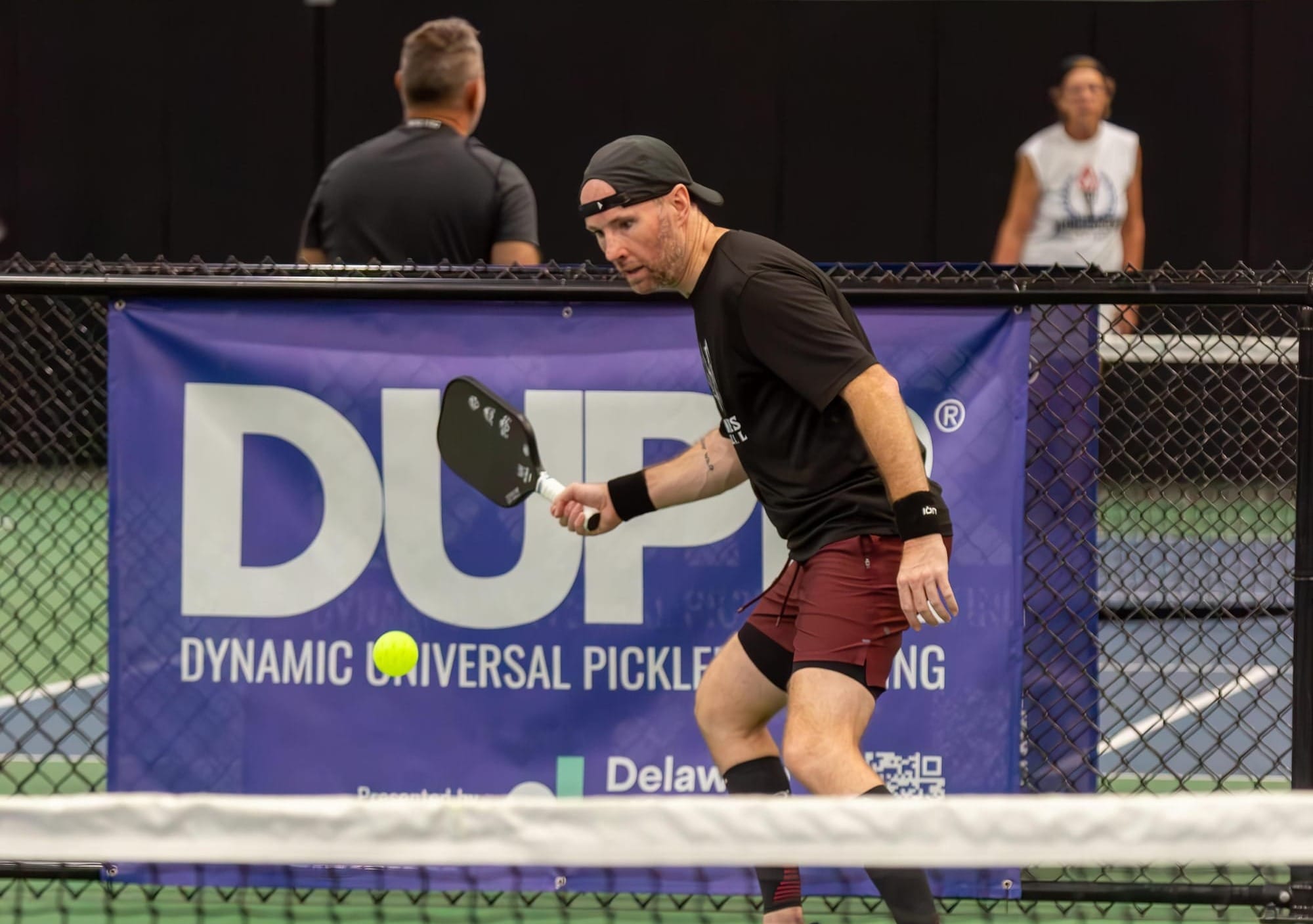
Every point begins with the same two shots: the serve and the return.
Both shots are often overlooked especially the return. Like the serve, the key to an effective return is depth. Let’s explore why this is the case in both singles and doubles.
Singles
In singles, serve and return depth are everything.
If you don’t play singles, feel free to gloss over this section. If you do play singles, especially at a high level, you know how crucial depth is on both the serve and the return.
In fact, I’d argue that a deep serve and return are the two most important shots in singles.
Let’s cover the basics.
In singles, you don’t have a partner, meaning you have twice the court to cover. Even if you’re built like Sam Querrey and as fast as Collin Shick, you still can’t cover the entire court, and a short return will make this even more apparent.
A short return gives your opponent unlimited options on their third shot, opening up both cross-court and down-the-line passing shots and the option to drop the ball or hit a hybrid drop-drive roll.
A short return in singles may require staying back
In an ideal world, you’d follow your return to the net in singles.
This gives you the highest chance of winning the point and pressures your opponent to hit a stronger shot. However, there are situations when you might want to hold back—like when you hit a shallow return. Given the options your opponent has with a weak return, it may make sense to stay back rather than rush forward only to get passed.
This approach, however, isn’t ideal as a long-term strategy.
Rafa Hewett is one of the few professional pickleball players who has found success staying back after a return, but even he comes in after most of his returns. Staying back is more common in women’s singles, where many players prefer to wait until they’re in position behind a stronger shot, often a ball or two after the return.
If you consistently have to stay back after your return, it allows your opponent to take the net and put pressure on you. If you’re unable to pass them consistently, they’ll score points and likely win the match in the long run.
How I Became a Professional Pickleball Player | Eric Roddy
Pro pickleball player Eric Roddy shares how he went from earning his MBA to becoming a pro pickleball player traveling on the APP and PPA Tours.
Doubles
While the return is less critical in doubles, it can still determine who wins the game.
In doubles, serve and return depth are slightly less crucial. Having a partner to cover at least half, if not more, of the court, is a game-changer; you can afford a shorter return without giving up as much control.
That said, a weak return can still lead to big scoring runs and ultimately decide a game.
One major risk of a weak return is that it allows aggressive “bash and crash” teams to thrive.
If your opponents like to drive the third shot, follow it in, and poach, a weak return essentially gives them permission to do so.
Three Ways Pickleball Has Changed Over the Last Year | Eric Roddy
Pickleball Pro Eric Roddy informs us about three of the biggest changes he’s seen in pickleball over the last year.
This issue is amplified if you and your partner are stacking and need to unwind after the return. Switching sides takes time and can make the fourth shot a challenging volley. Combine this with a weak return, and you’re left with even less time to switch and set up, leaving you vulnerable to your opponent’s aggressive shots.
Bash and crash teams feed off rhythm and confidence, and weak returns can fuel both, leading to multi-point runs that often decide a match.
A shorter return eases pressure on opponents and reduces potential free points
An easy-to-understand strategy in pickleball is to keep your opponents pinned to the baseline when you’re returning, forcing them to make the first error.
The game’s rules naturally support this strategy, as the receiving team has to let the return bounce before hitting a third shot. But a weak return reduces the pressure on your opponents to hit a precise, unattackable third shot.
A deep return gives you and your partner the time to unwind the stack (if needed) and get into position to hit a solid fourth shot, pinning your opponents to the baseline.
Your goal should be to make a consistent return, regardless of the quality of your opponents' serves, and use it to maintain your initial court position advantage. If your opponents consistently reach the net with low-pressure third-shot drops, focus on deepening your return.
Thanks for reading, and keep an eye out for the next article. Enjoy the grind, and remember, you can’t dink all day if you don’t start in the morning.
Pickleball Skill Quiz
Find out your pickleball rating